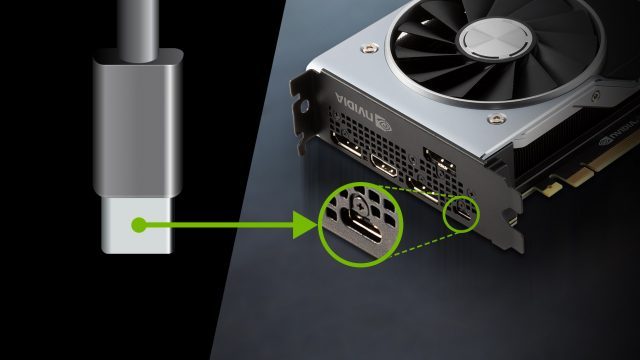Based on the company’s ‘Turing’ GPU architecture, NVIDIA’s GeForce RTX cards include hardware support for the new VirtualLink connector, a standard designed for next-gen VR headsets.
Announced last month, VirtualLink is a connection standard designed specifically for VR headsets, which is backed by a consortium of major players in VR space, including NVIDIA, AMD, Valve, Microsoft, and Oculus. Based on USB-C, the connector offers high bandwidth throughput and power into a single port, aiming to reduce and simplify the bulky tethers of today’s VR headsets.
Today NVIDIA revealed their brand new 20-series GeForce RTX cards, and further said that all include hardware support for VirtualLink. While third-party card makers like MSI, EVGA, Gigabyte, and others decide which ports will go on the cards they make, NVIDIA’s own ‘Founder’s Edition’ GPUs, which the company makes and sells itself, are all confirmed to include the VirtualLink USB-C port.


The VirtualLink connector offers four high-speed HBR3 DisplayPort lanes (which are “scalable for future needs”), a USB3.1 data channel for on-board cameras, and up to 27 watts of power. The standard is said to be “purpose-built for VR,” being optimized for latency and the demands of next-generation headsets.
The GeForce RTX Founder’s Edition cards start at $600 and are expected to begin shipping in late September.

